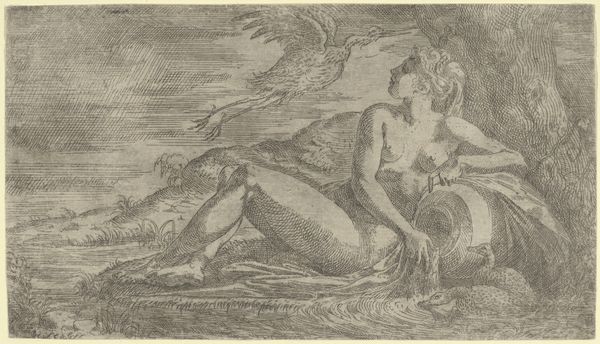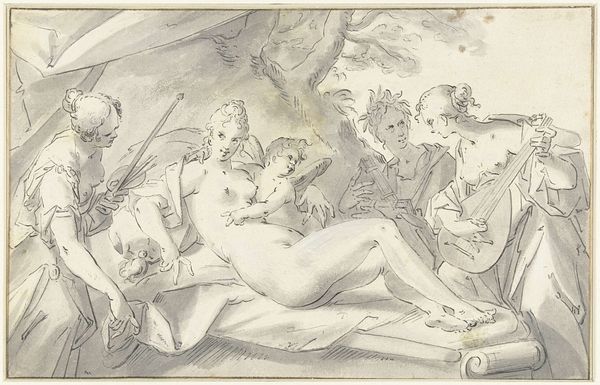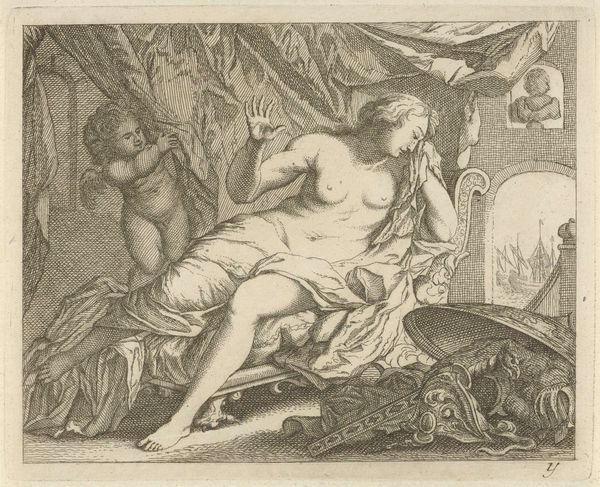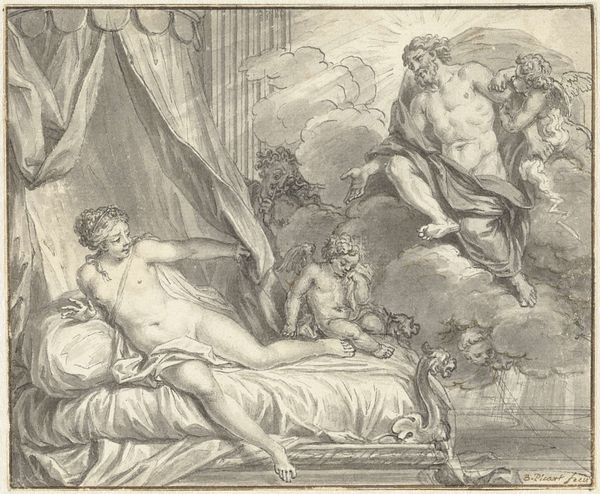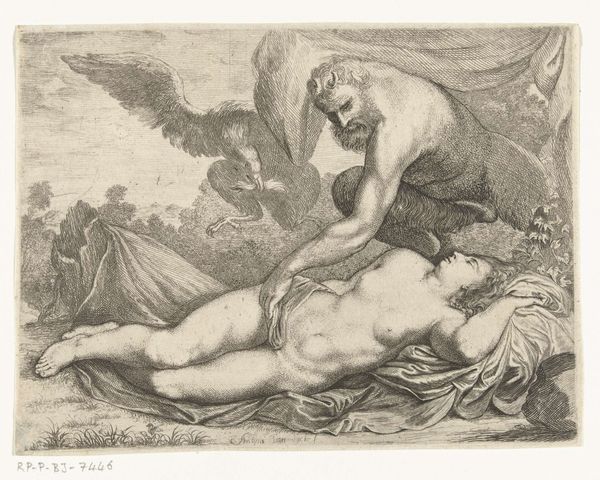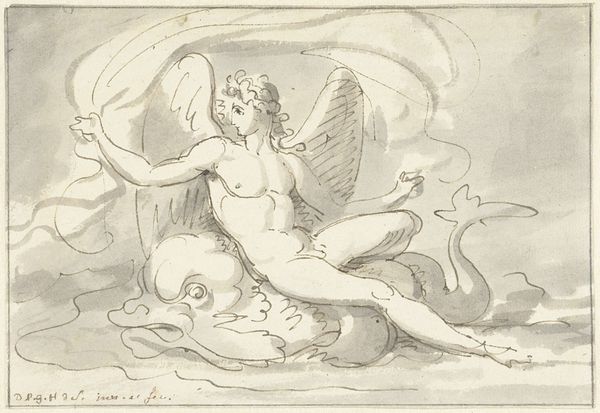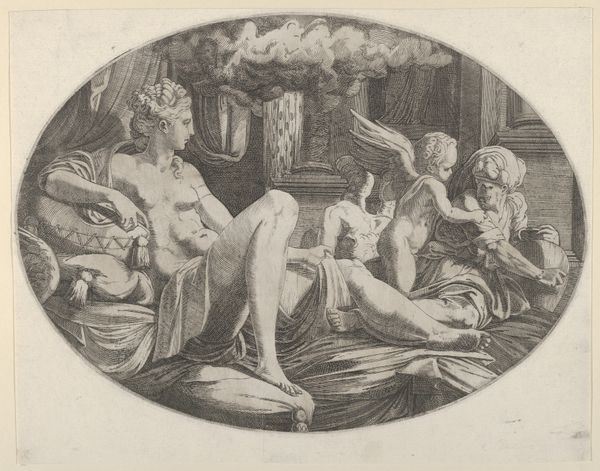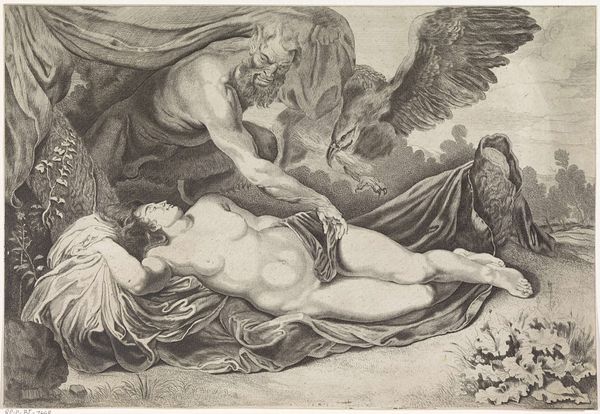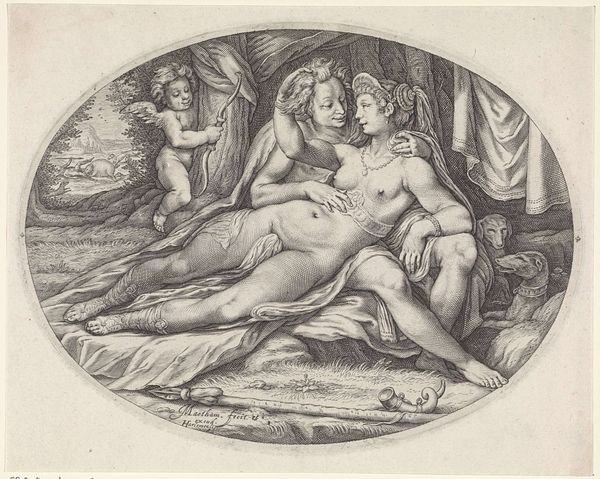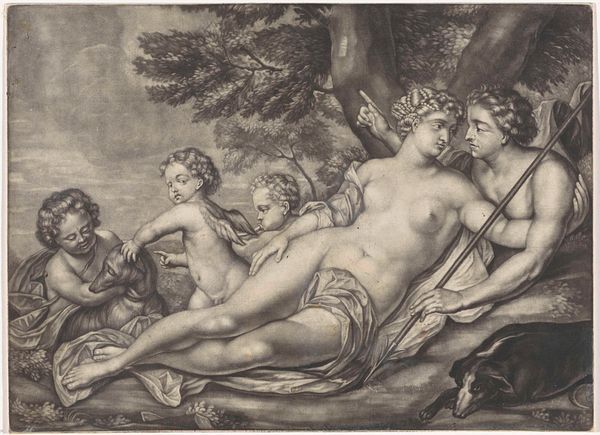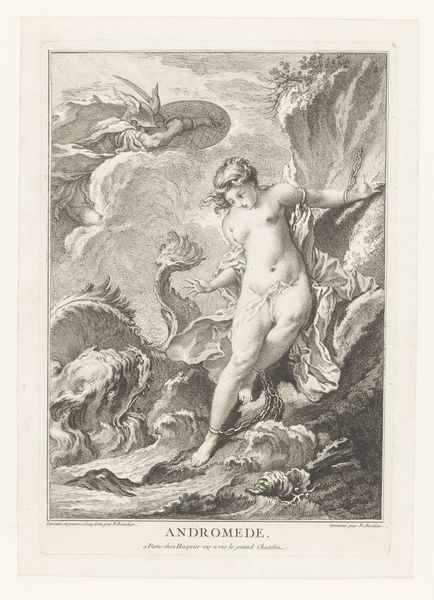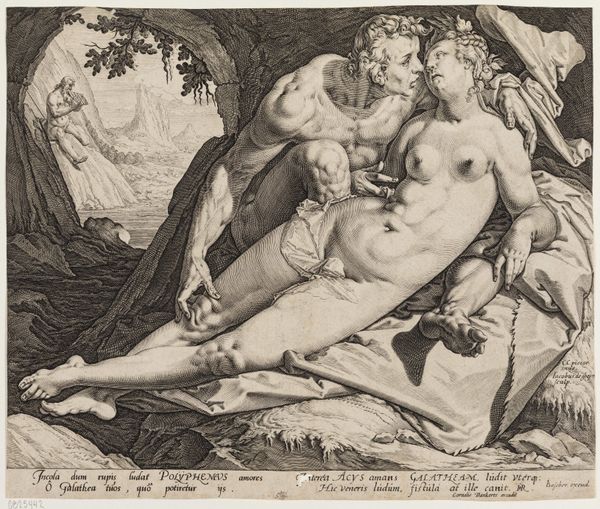
Dimensions: height 269 mm, width 356 mm
Copyright: Rijks Museum: Open Domain
Curator: Ah, isn't she luminous? Here we have Louis Marin Bonnet’s "Slapende Venus," a charcoal drawing dating back to 1771-1772, housed right here at the Rijksmuseum. Editor: She evokes such a melancholic atmosphere, even in slumber. There's a heavy weight to those soft charcoal lines. It is as though dreams carry their own burden, rendering even the goddess of love burdened. Curator: Precisely. Bonnet captures that duality beautifully. His commitment to academic art shows in the deliberate anatomical precision. Yet, it’s also steeped in Romanticism – you feel Venus as a subject, a presence with complexities rather than simply as an object of aesthetic admiration. Note her shadowed face—so suggestive! Editor: The composition is remarkably clever. See how the folds in the fabric surrounding her lead the eye—the gentle sweep across the legs toward the obscured face? This careful ordering grants structure to what would otherwise be rendered a more straightforward nude portrait, allowing viewers a path of discovering nuances as they move from materiality into deeper emotion. Curator: And that emotion sings so quietly! While we consider the conventions of nudes and mythological subjects during this period, this image feels… tender, less grand or bombastic, very personal. The figure's self-contained pose brings to mind the vulnerability inherent in beauty. Editor: Indeed. Through his control of medium and subtle shading, Bonnet transcends classical allegory and gives rise to something intimately felt. His strategic mark-making allows Venus a rare moment not as idol but self aware, reflective amidst opulent cloth – granting viewers an aperture beyond iconography and closer into human expression. Curator: So there we have it—Venus caught between worlds, rendered not as untouchable icon, but vulnerable inhabitant—as perhaps all goddesses ultimately become when faced with their humanity reflected back at them through art! Editor: Leaving us not simply to gaze upon form but dwell in unspoken narrative with equal parts intellect and intuition. A testament that artistic excellence may stem from balance struck well within art history's structures and sensitive application.
Comments
No comments
Be the first to comment and join the conversation on the ultimate creative platform.

